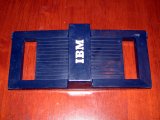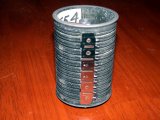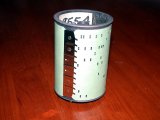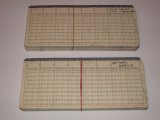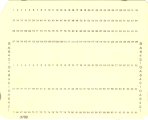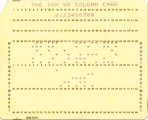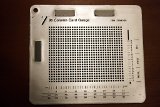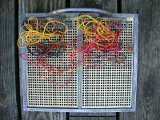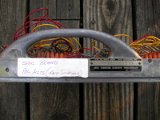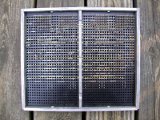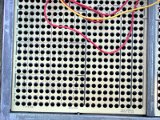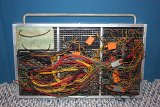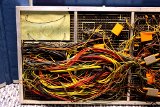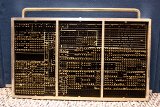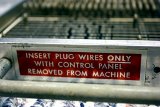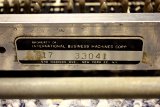The Aperture Card has an attached strip of microfilm, which in this case is an engineering drawing of a Circuit Card Assembly for some sort of power supply.
The Lace Card is simply a card with all the holes punched. According to stories, it could be used to sabotage a user's job by covertly inserting it into his card deck. It would most likely jam the card reader.
The blue item is a card weight, and is used in a card reader or sorter to hold the cards down in the input hopper. The cylinder is the program drum from an 029 keypunch, and is used to hold the program card.
The two card decks are for the IBM 1401, and play music (Anchors Aweigh, and She'll Be Comin' 'Round the Mountain) on the 1403 line printer. See Ed Thelen's IBM 1401 restoration site for audio files of the 1403 playing music.
This is a plugboard or "control panel" from an IBM type 88 collator, circa 1959. The type 88 was a numeric-only collator, whose job it was to select or combine cards from two input decks into one of five output hoppers. The wires on the plugboard were used to program the selection process.
This is a larger plugboard from an IBM model 402 or 403
accounting machine.
The 402 was introduced in 1948.
According to the tag, it's wired for invoicing, with a date of June 6, 1963.
This should be in the dictionary next to the definition of "spaghetti code".

Return to the Storage Media page.
Return to the Old Technology Collection page.












































